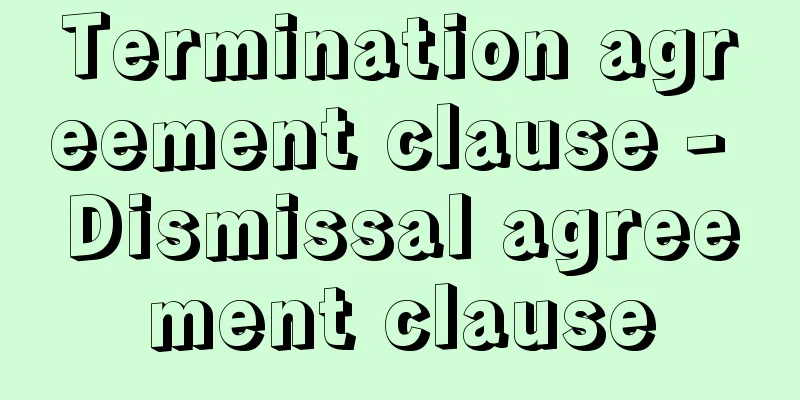Differentiation of peasantry

|
Regarding the decomposition of the peasant class, there is a theory that claims the existence of a decomposition that reproduces the lord-peasant relationship in feudal society (feudal decomposition), but since this is not the prevailing view, here we will discuss the decomposition that occurred during the disintegration of feudal society and the decomposition that occurred after the establishment of capitalism. When feudal rule loosens and feudal rent can no longer confiscate all of the peasant's surplus production, peasants enter into commodity exchange relations with each other as small commodity producers, and a certain degree of peasant commodity economy is established. When the peasant class is caught up in this commodity economy, a decomposition into rich peasants and poor peasants occurs based on the disparity between the individual value and market value of the commodities produced by each peasant (the difference in the conditions of each peasant). This decomposition disintegrates feudal society to a certain extent, but if feudal relations still exist and the peasant commodity economy is restricted, it cannot proceed fully, and may result in rich peasants becoming landlords and poor peasants becoming tenant farmers (some theories call this a distortion of the decomposition of the peasant class, or landlord decomposition). However, as the productive forces continue to develop, the peasant commodity economy breaks free from the constraints of feudal relations and develops further, and the decomposition of the peasant class progresses in earnest, with the rural bourgeoisie, which operates capitalist management, growing on one side, and the rural proletariat, which becomes wage laborers, growing on the other. This decomposition is often called the bipolar decomposition of the peasant class (or bourgeois decomposition). This decomposition is the driving force that finally disintegrates feudal society and leads to the formation of the capitalist mode of production in both agriculture and industry. However, in history, it is rather rare for the peasantry to completely disintegrate into two extremes, and even after the establishment of capitalist society, a large number of peasants continue to exist as small producers. Such peasants are then further disintegrated by the effects of capitalism. However, in relatively backward capitalist countries other than Britain, capitalism does not necessarily complete the disintegration of the peasantry, and in many cases it allows a large number of under-farming peasants to remain as a source of cheap labor, or allows the poor tenant farming system to continue. In particular, when the stage of monopoly capitalism is reached, the disintegration of the peasantry is distorted in various ways, resulting in the various agricultural problems we see today. [Tadaki Otsuka] "A Theory of the Establishment of Modern Society" by Takahashi Kohachiro (1947, Nippon Hyoronsha)" ▽ "A Theory of the Decomposition of the Peasant Class" by Ishiwata Sadao (1955, Yuhikaku)" ▽ "Reproduction Structure and the Decomposition of the Peasant Class, edited by the Society for the History of Land Systems (1961, Ochanomizu Shobo)" ▽ "The Development of Capitalism in Russia" by Lenin (translated by Yamamoto Satoshi, Iwanami Bunko / supervised translation by Soejima Tanenori, Otsuki Shoten, Kokumin Bunko)" [Reference] | |Source: Shogakukan Encyclopedia Nipponica About Encyclopedia Nipponica Information | Legend |
|
農民層の分解については、封建社会において領主・農民関係を再生産していくような分解(封建的分解)の存在を主張する説もあるが、それは通説となっていないので、ここでは、封建社会の解体期における分解と資本主義成立後の分解とについて述べる。 封建的支配が弛緩(しかん)して封建地代が農民の剰余生産物のすべてを収奪しえないようになると、農民は小商品生産者として相互に商品交換関係を取り結ぶようになり、一定の広がりをもった農民的商品経済が成立する。こうした商品経済のなかに農民層が巻き込まれると、それぞれの農民の生産する商品の個別的価値と市場価値との間の格差(農民各自の条件の差)に基づいて、富裕化する農民と貧困化する農民とへの分解が生じる。この分解は、封建社会をある程度まで解体せしめるが、封建的諸関係がなお存続して農民的商品経済が制約されている場合には、なお本格的に進行することができず、富農の地主化と貧農の小作化に帰結する場合がある(農民層分解の歪曲(わいきょく)、地主的分解と名づける説もある)。しかし、生産諸力のいっそうの発展によって農民的商品経済が封建的諸関係の制約を破ってさらに発展するようになると、農民層の分解は本格的に進行し、一方の極には資本家的経営を営む農村ブルジョアジーが、他方の極には賃労働者化する農村プロレタリアートが、それぞれ成長する。この分解をとくに農民層の両極分解(またはブルジョア的分解)と名づける場合が多い。この分解は、封建社会を最終的に解体せしめて、農業においても工業においても資本主義的生産様式を形成せしめる起動力たるものである。 しかしながら、歴史上、農民層が完全に両極に分解してしまうことはむしろまれであって、資本主義社会が成立したのちにも小生産者としての農民層が大量に存続する場合が多い。こうした農民層は、その後、資本主義の作用によってさらに分解されることになる。だが、イギリス以外の相対的後進資本主義国においては、資本主義はかならずしも農民層の分解を完成せしめるものではなく、低廉な労働力の源泉としての過小農の大群を残存せしめたり、劣悪な小作制度を存続せしめたりする場合が多い。とくに独占資本主義の段階に入ると、農民層の分解はさまざまな歪曲を受け、今日の多様な農業問題がもたらされている。 [遅塚忠躬] 『高橋幸八郎著『近代社会成立史論』(1947・日本評論社)』▽『石渡貞雄著『農民分解論』(1955・有斐閣)』▽『土地制度史学会編『再生産構造と農民層分解』(1961・御茶の水書房)』▽『レーニン著『ロシアにおける資本主義の発展』(山本敏訳・岩波文庫/副島種典監訳・大月書店・国民文庫)』 [参照項目] | |出典 小学館 日本大百科全書(ニッポニカ)日本大百科全書(ニッポニカ)について 情報 | 凡例 |
<<: Peasant Revolt - Nouminhanran
>>: Farmers' Union - Nouminkuumiai
Recommend
Urizura [town] - Urizura
An old town in Naka District, central Ibaraki Pref...
Apis
… [The cow as a symbol] The following theory by E...
De Gubernatis, A.
…In his youth, he joined the Garibaldi Expedition...
Kjerulf, H.
...National romanticism fostered outstanding arti...
Star catalogue - Seihyo (English spelling)
A star catalog is a list of stars that compiles i...
Onga Lake
…Located on the west bank of the downstream Onga ...
Donburi - Rice bowl
〘Noun〙① A thick, deep ceramic bowl for serving foo...
jackstones
…Marbles [Toshiro Hanzawa] [Similar examples in f...
Toyonaka [town] - Toyonaka
A former town in Mitoyo County, western Kagawa Pre...
Catopsilia pomona
…[Takakura Tadahiro]. … *Some of the terminology ...
Hachijojima
It belongs to the Hachijo Branch Office of Tokyo ...
Revolutionary Trials - Revolutionary Trials
Revolutionary trials are part of revolutionary act...
Jacquet-Droz, HR (English spelling) JacquetDrozHR
…A father and son known for making automata in Sw...
Goejongdong Ruins - Goejongdong Ruins (English)
A tomb site from the Plain Pottery (Bronze Age) pe...
Kainan Maru
...Furthermore, after learning that an American t...









![Kassapa [I] - Kassapa](/upload/images/67d00e02a4144.webp)